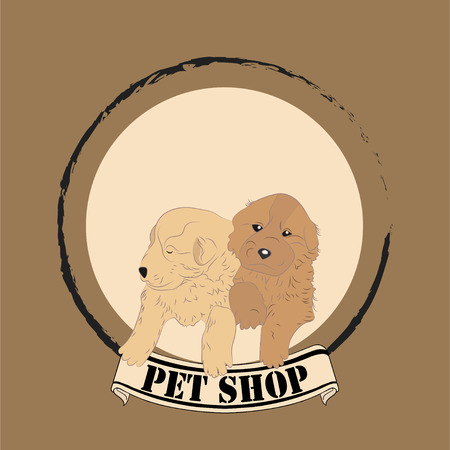Understanding Your Small Pet’s Nutritional Needs
When it comes to feeding your small pet, a one-size-fits-all approach just doesn’t work. Different species—like rabbits, hamsters, guinea pigs, and other popular small animals—have unique dietary needs that must be met for them to thrive. For example, rabbits are strict herbivores and need a diet high in hay and fiber to keep their digestive systems healthy, while hamsters are omnivores who benefit from a mix of grains, seeds, vegetables, and occasional protein sources. Guinea pigs also require plenty of hay but differ from rabbits in that they need daily vitamin C supplementation, since they can’t produce this vital nutrient on their own. Understanding these key differences is essential for keeping your pet healthy and happy. By tailoring your pet’s portion sizes and food types to their specific requirements, you’ll help prevent obesity, digestive issues, and nutritional deficiencies. In the following sections, we’ll break down exactly what—and how much—to feed some of the most common small pets in American households.
Portion Sizes for Rabbits: Hay, Veggies, and Pellets
Feeding your rabbit the right portions is key to keeping them healthy, energetic, and happy. In the U.S., most vets recommend a diet that mimics what wild rabbits eat: lots of fiber, moderate greens, and limited processed food. Here’s how to break down your bunny’s daily menu:
Hay: The Main Course
Hay should make up about 80% of your rabbit’s diet. Timothy hay is a favorite, but orchard grass or meadow hay work well too. Your rabbit needs unlimited access to fresh hay—think of it like their all-day salad bar. This keeps their digestive system running smoothly and helps wear down their teeth.
Leafy Greens: Daily Variety
Fresh leafy greens add important nutrients and variety. Offer about 1 cup of greens per 2 lbs of body weight each day. Rotate between options like romaine lettuce, cilantro, parsley, and dandelion greens. Avoid iceberg lettuce—it’s low in nutrition.
| Rabbit Weight | Daily Greens Portion |
|---|---|
| 2 lbs | 1 cup |
| 4 lbs | 2 cups |
| 6 lbs | 3 cups |
Pellets: Small But Mighty
Pellets are like a multivitamin for rabbits—they’re concentrated and should be fed in moderation. Choose high-fiber pellets (at least 18% fiber) with no added seeds or dried fruit. For adult rabbits, offer about ¼ cup of pellets per 5 lbs of body weight per day.
| Rabbit Weight | Daily Pellet Portion |
|---|---|
| 2 lbs | 1 Tbsp |
| 5 lbs | ¼ cup |
| 8 lbs | ⅓ cup |
Treats: Occasional Rewards Only
Treats should be rare—no more than 1-2 teaspoons per 2 lbs body weight per day. Stick to natural treats like a small slice of carrot, apple (no seeds), or a berry or two. Too many sugary treats can upset your rabbit’s tummy and lead to obesity.
This balanced approach will help your rabbit stay healthy and active—just remember, when in doubt, more hay and fewer treats is always the safest bet!

3. Hamster Feeding Guide: Seeds, Grains, and Fresh Foods
Hamsters are tiny but energetic pets, and their diet should reflect their size as well as their activity level. Commercial hamster food mixes—typically made up of seeds, grains, and pellets—should be the main part of your hamster’s daily menu. For most adult hamsters, about one tablespoon of a high-quality mix per day is sufficient. Overfeeding can lead to obesity, so always measure portions carefully and avoid refilling the bowl until it’s mostly empty.
Choosing the Right Foods
A balanced hamster diet includes more than just seeds. Supplement their commercial mix with small servings of fresh fruits and vegetables, such as apple slices (no seeds), cucumber, or carrots. Limit these treats to a thumbnail-sized portion once or twice a week to prevent digestive issues.
Safe Treats and What to Avoid
While hamsters love sunflower seeds and nuts, these are high in fat and should be offered sparingly—think of them as an occasional treat rather than a staple food. Always avoid chocolate, onions, garlic, citrus fruits, and anything sticky or sugary, as these can be harmful to hamsters.
Tips to Prevent Overfeeding
To keep your hamster healthy, remove uneaten fresh foods after a few hours to prevent spoilage. Regularly check for food hoarded in their bedding and adjust daily portions if you notice leftovers piling up. Stick to a feeding routine by offering food at the same time each day, which helps regulate your pet’s appetite and ensures they aren’t overeating.
4. What About Guinea Pigs, Gerbils, and Mice?
Feeding your small pet the right portions is crucial for their well-being, and each species has unique dietary needs. Here’s a breakdown for guinea pigs, gerbils, and mice, focusing on daily portion sizes, favorite foods, and special health considerations.
Guinea Pig Diet Guidelines
Guinea pigs need a consistent supply of hay, fresh vegetables, and specially formulated pellets to stay healthy. They cannot synthesize vitamin C on their own, so it’s essential to provide them with vitamin C-rich foods daily.
| Food Type | Daily Portion | Notes |
|---|---|---|
| Timothy Hay | Unlimited | Main diet staple; helps with digestion and dental health. |
| Pellets (Vitamin C fortified) | 1/8 cup per day | Choose plain pellets without added seeds or fruit. |
| Fresh Vegetables | 1 cup per day | Include leafy greens (e.g., romaine lettuce, kale) and bell peppers for extra vitamin C. |
| Fruit Treats | 1-2 small pieces per week | Avoid citrus; offer apple slices or blueberries as occasional treats. |
Gerbil Feeding Recommendations
Gerbils are active little omnivores that thrive on a mix of grains, seeds, and occasional protein sources. Overfeeding fatty seeds can cause obesity, so be mindful of portion control.
| Food Type | Daily Portion | Notes |
|---|---|---|
| Commercial Gerbil Mix | 1 tablespoon per day | Select mixes with minimal sunflower seeds to avoid excess fat. |
| Fresh Vegetables (carrot, broccoli) | A few bites per day | Avoid high-water veggies like cucumber to prevent diarrhea. |
| Treats (unsweetened cereal, boiled egg) | Sparingly (once or twice a week) | Treats should not exceed 10% of total diet. |
Mice: Tiny Portions for Tiny Pets
Mice have fast metabolisms but tiny stomachs. A balanced commercial mouse food is best, supplemented with fresh produce in moderation. Too many treats can lead to weight gain and health issues.
| Food Type | Daily Portion | Notes |
|---|---|---|
| Commercial Mouse Pellets/Mix | 1 teaspoon per day | Avoid mixes with lots of corn or sugary bits. |
| Fresh Veggies (broccoli, peas) | A few small pieces per day | No onions or garlic; introduce new veggies slowly to avoid stomach upset. |
| Treats (plain Cheerios, cooked pasta) | Tiny amounts once a week | Treats should be given sparingly. |
Tips for All Small Pets:
- Always provide fresh water—change it daily.
- Avoid sudden changes in diet to prevent digestive problems.
- If you notice your pet refusing food or acting lethargic, consult a veterinarian experienced with exotic pets.
The Bottom Line:
Your guinea pig, gerbil, or mouse depends on you for balanced nutrition and portion control. Stick to these guidelines and adjust based on your pet’s age, activity level, and health status for the happiest—and healthiest—small pets!
5. Recognizing Overfeeding and Underfeeding
Proper portion control is key to your small pet’s health, but even the most diligent owners can sometimes misjudge their animal’s needs. Knowing the signs of overfeeding and underfeeding can help you spot problems early, so you can make changes before they affect your pet’s well-being.
Common Signs of Overfeeding
Overfeeding is a frequent issue, especially with treats or high-calorie foods. Look out for these red flags:
Weight Gain and Obesity
If your rabbit or hamster is noticeably heavier, has trouble moving around, or you see fat deposits along the body, it could mean they’re getting too much food.
Changes in Droppings
Soft or excess droppings—especially in rabbits—may indicate a diet that’s too rich or high in carbohydrates. This can cause digestive issues and discomfort.
Lethargy
An overweight pet may seem less interested in play or exercise, preferring to lounge instead of explore or run on their wheel.
Common Signs of Underfeeding
Underfeeding can be just as harmful as overfeeding. Watch for these warning signals:
Visible Bones and Weight Loss
If your small pet looks thin, with prominent ribs or spine, or seems weaker than usual, they may not be getting enough nutrition.
Lack of Energy
A hungry pet will often act listless, sleep more, or lose interest in activities they normally enjoy.
Poor Coat Condition
Dull fur, bald patches, or flaky skin can all be signs that your pet isn’t getting enough essential nutrients from their diet.
What to Do If You Notice Issues
If you suspect overfeeding or underfeeding, adjust your pet’s portions gradually and keep a close eye on their behavior and appearance. Consult your vet if you’re unsure how much to feed or if symptoms don’t improve. By staying observant and proactive, you’ll help ensure your furry friend stays happy and healthy.
6. Tips for Encouraging Healthy Eating Habits
Ensuring your small pet develops healthy eating habits is just as important as knowing the correct portion sizes. Here are some practical tips tailored for American pet owners to help you create a consistent, enriching, and safe feeding routine:
Stick to a Consistent Feeding Schedule
Small pets thrive on routine, so try to feed them at the same times every day. Whether it’s morning and evening for rabbits or once daily for hamsters, sticking to a schedule helps regulate their metabolism and prevents overeating.
Offer a Variety of Safe Foods
Just like us, small pets enjoy variety in their meals. Rotate between approved vegetables, high-quality pellets, hay (for rabbits), or grains and seeds (for hamsters) to ensure they receive a balanced mix of nutrients. Always research which foods are safe and avoid anything toxic or sugary.
Keep Treats Occasional
Treats should only make up a small percentage of your pet’s diet. In the U.S., it’s common to find fun, store-bought treats, but fresh veggies or tiny pieces of fruit are often healthier options. Use treats as rewards during enrichment activities rather than regular meal components.
Enrich Mealtime With Foraging Activities
Encourage natural behaviors by hiding food in toys or creating DIY foraging games. Scatter food in bedding or use puzzle feeders to keep your pet mentally stimulated and physically active during mealtime.
Monitor Portion Sizes Carefully
Measure out each meal according to your pet’s needs—don’t just eyeball it! Using kitchen scales or measuring cups ensures you’re not unintentionally overfeeding. Consult with your vet if you’re unsure about appropriate amounts.
Ensure Food and Water Safety
Always provide fresh water and clean dishes daily. Remove uneaten food before it spoils, especially perishable items like fruits and veggies. Double-check that all feeding materials are non-toxic and suitable for your specific type of pet.
By maintaining a predictable feeding routine, offering dietary variety, enriching mealtimes, and prioritizing safety, you’ll help your rabbit, hamster, or other small pets enjoy happier, healthier lives!


